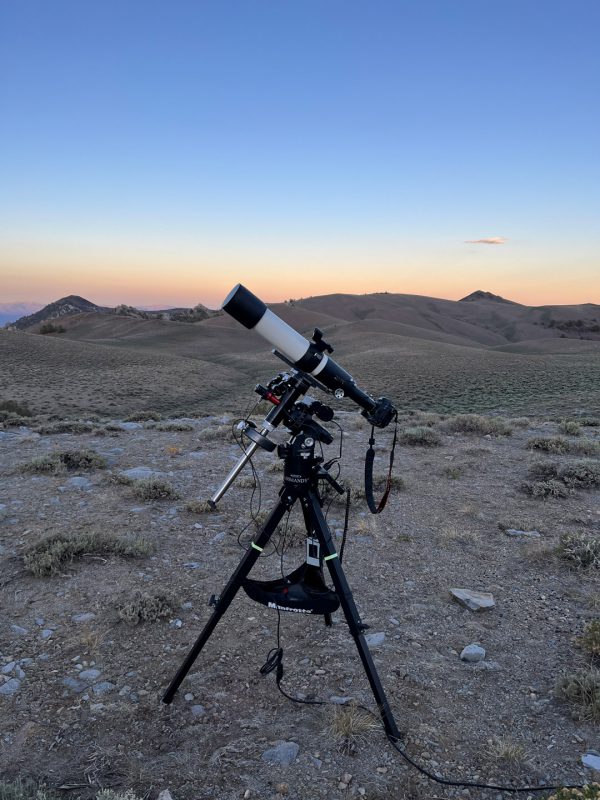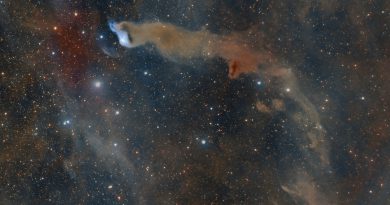The Allure of the Moon
Thou silver deity of secret night,
Lady Mary Wortley Montagu (1689 – 1762), ‘Hymn to the Moon’
Direct my footsteps through the woodland shade;
Thou conscious witness of unknown delight,
The Lover’s guardian, and the Muse’s aid!
Where would we be without the Moon? It has served as a light source, timekeeper, navigation tool, inspiration for poets, a nearby neighbor to draw us off the planet, and most importantly, it stabilizes our orbital tilt to allow life to flourish on the Earth.
The latest benefit we’ve derived from our weatherless and stable friend is understanding how often space rocks, big and small, cross our orbital path. Recently, NASA’s Lunar Reconnaissance Orbiter photos, which covers 6.6% of the lunar surface, revealed 222 new small craters (2- to 43-meters diameter) created over a period of 7 years1. More ominous, according to a University of Toronto study, “The production rate of large lunar craters (more than 10 kilometers in diameter) increased by a factor of two to three in the past ~300 million years.”2 This is the time-frame of the Cretaceous-Paleogene mass extinction that eliminated T. Rex and friends.
We dedicate this week’s blog to the study of our life-long friend, the Moon, as seen from the surface of the Earth.
Full Moon
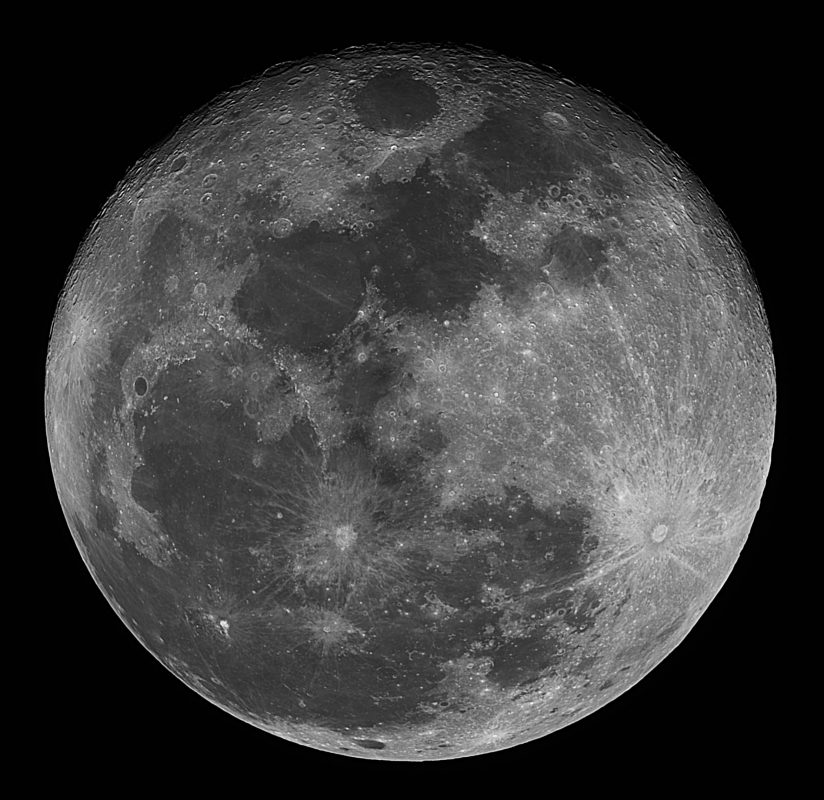
This image is of a waning Moon, after being full the day before. At the bottom right of the lunar disc is the famous rayed crater Tyco. Depending on the lighting, you can trace some of these rays far across the visible surface of the Moon. Due to their brightness, the impact was believed to have taken place just 108 million years ago. The dark areas of the moon are the iron-rich maria (Latin for sea). These are lava plains created by volcanic activity due to asteroid impacts on the far side of the Moon. The bright areas are the lunar highlands and mountains formed by asteroid impact debris.
Montes Appenninus

Montes Appenninus is the dramatic 3.9 billion-year-old mountain range running through the center of the image with the shadowed crater Eratosthenes anchoring the left side of the range. These mountains form the border of Mare Imbrium on the upper left, Mare Vaporum on the bottom-left, and Mare Serenitatis on the lower right. The largest of the trio of craters at the top-right is Archimedes (81 km) showing a flat lava interior. The next largest is Aristillus showing multiple central peaks and the smallest is Autolycus.
Apollo 15 Landing Site

The Montes Appenninus image also contains a historic landing site. If you follow the smooth lava plain that borders Archimedes to where it meets Montes Appenninus, you’ll see the squiggle of Hadley Rille bisected by a small crater named Hadley C. Apollo 15 landed on the far right side of Hadley Rille as seen from the perspective of the image.
Archimedes to Aristoteles

This image continues where the above images leave off. Archimedes, Aristillus, and Autolycus are at lower left on this frame. On the extreme opposite side are two large craters Aristoteles (the larger at 87 km) and Eudoxus. Between these sets of craters, is the thin ring of the weathered crater Cassini that encloses two smaller craters. The mountain range at the bottom, below Cassini, is the Montes Caucasus range. The mountains above Cassini are the Montes Alpes. Toward the top-right of center is a cut that runs across Alpes range. This is the famous Vallis Alpes.
Lunar Mosiac

This image is a mosaic of the lunar surface. The region in the central part was explored in the prior two photos, with Montes Appenninus, the major mountain range to the left of the center, and the Montes Alpes, with the cut of Vallis Alpes, to the right of center. To the left of Montes Appenninus is Mare Vaporium. The prominent crater Manilius is at the bottom of the image about a third of the way from the left edge. Near the bottom-left are craters Godin and Agrippa (the larger) with notable central peaks. Above Agrippa is crater Triesnecker in the lava plane of Sinus Medii next to Mare Vaporium. On the right of the Montes Alpes is Mare Frigoris and the northern highlands around the polar region.
Plato to the Pole
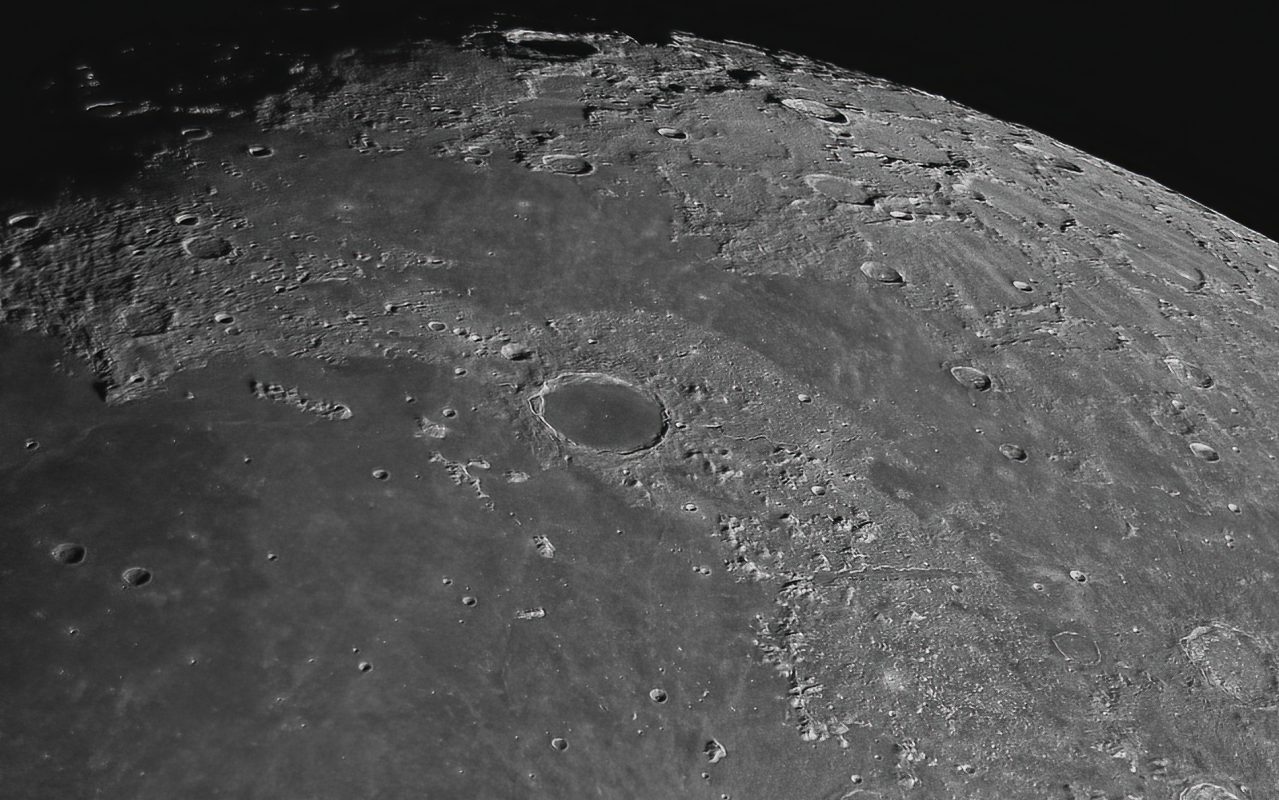
Mare Imbrium dominates the lower-left of the frame with lava-filled, major crater Plato (101 km) near the center. Vallis Alpes is toward the lower-right of Plato as it cuts through to Montes Alpes. The sea above Plato is Mare Frigoris with the northern highlands and the lunar north pole beyond. At the very top of frame is deeply shadowed crater Anaxagoras, with its young, high-albedo rim walls just catching enough light to be identifiable.
Crescent Moon
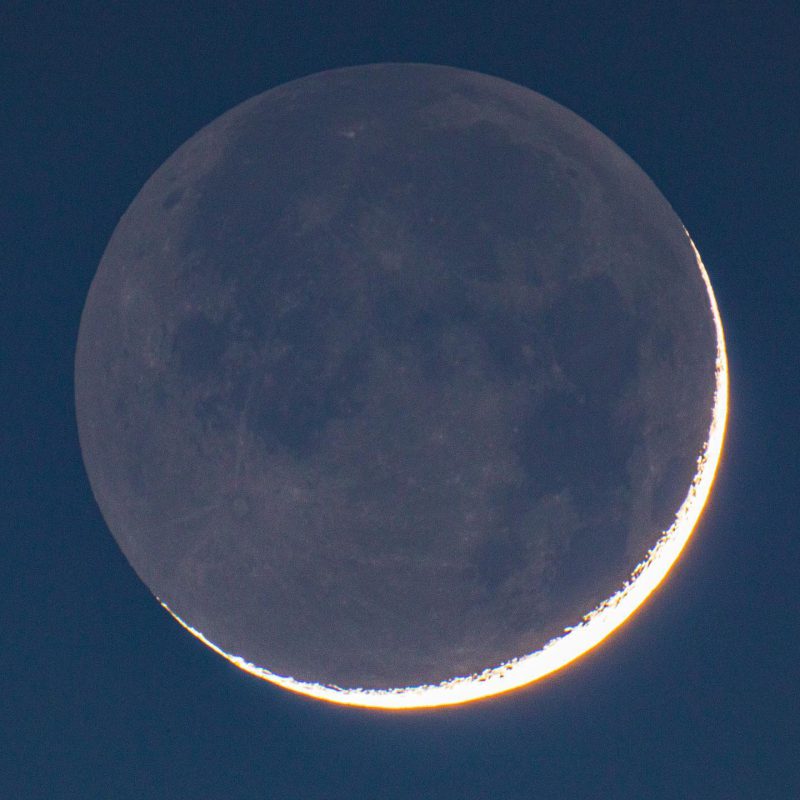
We started out with the Moon just past full and we end with the Moon just past New. The allure of the crescent phase is the faintly glowing Earthshine — “the young moon in the old moon’s arms” near the horizon. Leonardo da Vinci was the first to explain, in the 16th century, that light reflecting off the Earth was illuminating the night-side of the Moon.
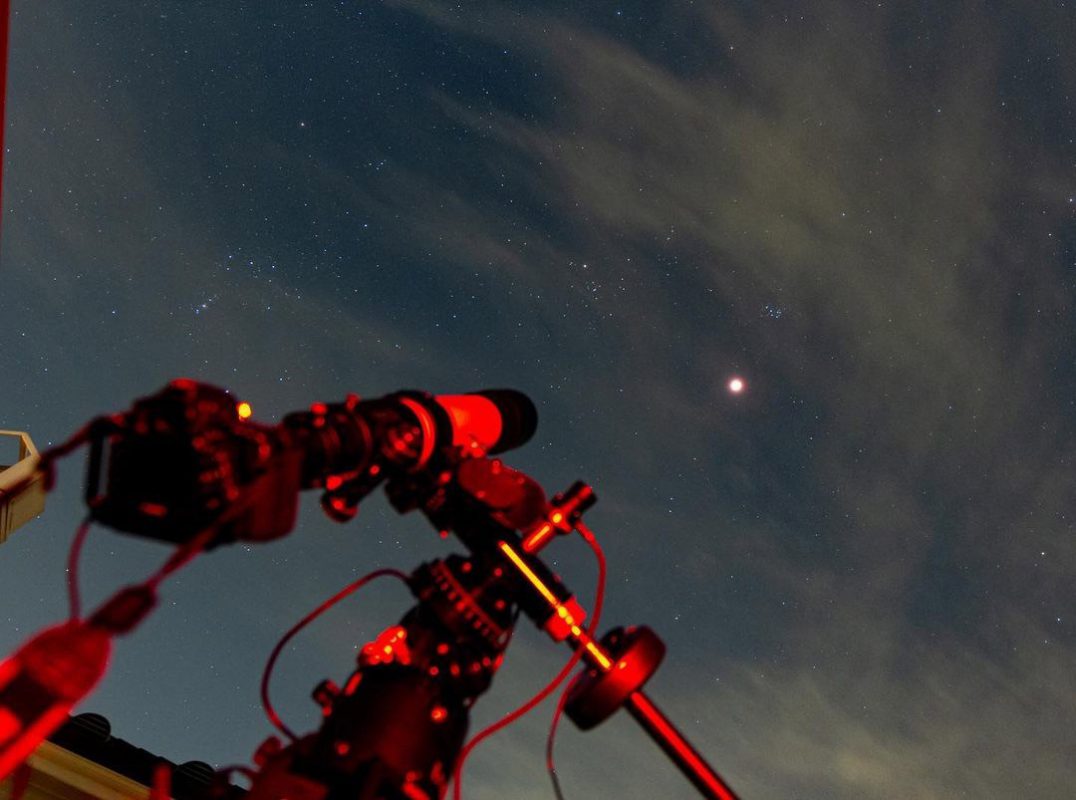
There is something haunting in the light of the Moon. It has all the dispassionateness of a disembodied soul and something of its inconceivable mystery.
Joseph Conrad (1857 – 1924)
Did you observe, sketch, or image with Tele Vue gear? We’ll like your social media post on that if you tag it #televue and the gear used. Example:
#televue #tv85 #ethos #moon
Do you want your Tele Vue images re-posted on Tele Vue Optics’ Social Media accounts? Use this hashtag for consideration:
More Info
- 1Witze, Alexandra. “Incoming! Space Rocks Strike the Moon More Than Expected.” Scientific America, 13 Oct. 2016, www.scientificamerican.com/article/incoming-space-rocks-strike-the-moon-more-than-expected.
- 2Mazrouei, Sara. “What the moon’s craters reveal about the Earth’s history: U of T expert and lead author of new study.” University of Toronto, 18 Jan 2019, www.utoronto.ca/news/what-moon-s-craters-reveal-about-earth-s-history-u-t-expert-and-lead-author-new-study.
- Tele Vue and the Moon Men from Philly! blog post.
- Return to the Moon with Michel Deconinck blog post.
- The Art of Sketching the Moon at the Eyepiece blog post.






